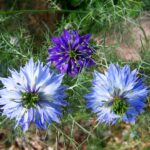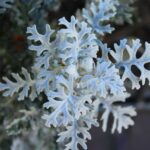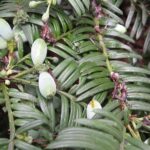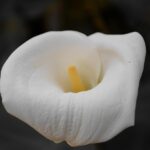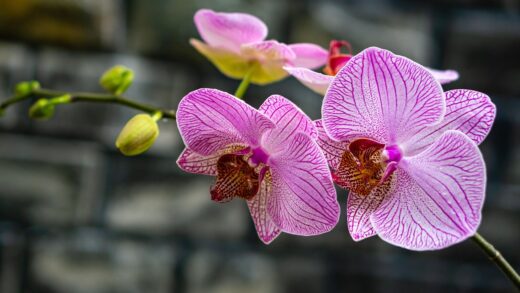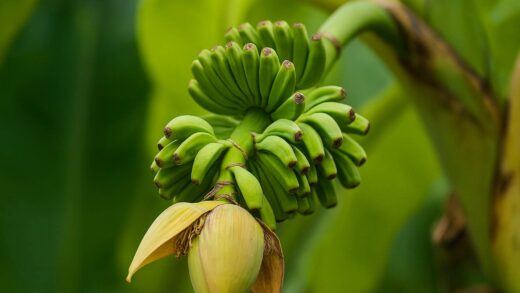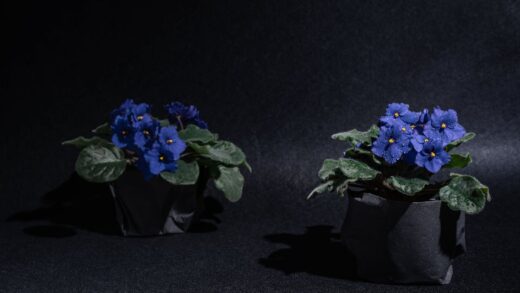Understanding the precise water requirements of the Madagascar periwinkle is fundamental to its cultivation, as this plant has a nuanced relationship with moisture. Although it is renowned for its excellent drought tolerance once established, this characteristic can be misleading for the novice gardener. Consistent and appropriate watering, especially during its establishment phase and periods of active growth, is crucial for developing a robust plant capable of producing the lush foliage and profusion of flowers it is known for. The key lies in achieving a balance: providing sufficient hydration to fuel its vigorous performance while strictly avoiding the waterlogged conditions that are detrimental to its root health. This balance is the cornerstone of effective irrigation for this species.
The plant’s natural habitat in Madagascar is characterized by distinct wet and dry seasons, which has endowed it with a root system that is efficient at seeking out moisture but highly susceptible to rot in saturated soil. In a garden setting, this means the goal is not to keep the soil constantly wet, but rather to allow it to dry out moderately between waterings. This cycle of drying and hydrating encourages the roots to grow deeper and stronger, making the plant more resilient in the long run. Overwatering is by far the more common and serious mistake made in the care of this plant, leading to a host of fungal issues that can quickly prove fatal.
Several environmental factors heavily influence the plant’s water needs, including temperature, sunlight exposure, humidity, and wind. A plant growing in a hot, sunny, and windy location will lose moisture through transpiration much more quickly than one in a cooler, more sheltered spot. Similarly, plants in porous terracotta pots will require more frequent watering than those in plastic containers or those planted directly in the ground. Therefore, a rigid, one-size-fits-all watering schedule is ineffective; instead, a flexible approach based on regular observation of the plant and its soil is required.
Ultimately, the objective of a proper irrigation strategy is to maintain optimal plant turgor and support metabolic processes without compromising the essential flow of oxygen to the roots. Learning to recognize the subtle cues the plant provides, such as a slight drooping of the leaves, can help you determine when it is time to water. By combining this observation with the practice of physically checking the soil moisture, you can develop an intuitive and highly effective watering routine that will keep your Madagascar periwinkle healthy and thriving throughout the entire growing season.
Establishing a watering routine
For newly planted Madagascar periwinkle, establishing a consistent watering routine is critical for its survival and successful establishment. During the first two to three weeks after planting, the root system is still developing and has not yet penetrated deep into the soil. At this vulnerable stage, the soil around the young plant should be kept consistently moist to encourage rapid root growth. This may require watering every other day, or even daily in very hot weather, to prevent the shallow root ball from drying out and causing the plant to wilt.
More articles on this topic
Once the plant is established, which is typically indicated by the appearance of new growth and an overall look of vigour, the frequency of watering can be gradually reduced. The goal is to transition to a deep but less frequent watering schedule. This approach encourages the roots to grow deeper into the soil in search of moisture, which makes the plant more self-sufficient and drought-tolerant over time. A good general rule for established plants is to water thoroughly when the top 3 to 5 centimetres of soil feel dry to the touch.
The method of watering is just as important as the frequency. Always apply water directly to the base of the plant, at the soil level, rather than using an overhead sprinkler. This technique delivers water straight to the root zone where it is needed and helps to keep the foliage dry. Wet foliage, especially overnight, can create an ideal environment for the development and spread of fungal diseases like leaf spot and botrytis. Using a soaker hose or a drip irrigation system is an excellent way to provide slow, deep watering while minimizing moisture on the leaves.
When you do water, do so deeply and thoroughly. A light, shallow sprinkling only moistens the top layer of soil, which encourages the development of a weak, shallow root system that is more susceptible to drought stress. The aim is to saturate the entire root zone, which for in-ground plants means applying enough water to penetrate at least 15 to 20 centimetres deep. For container plants, continue watering until you see a generous amount of water flowing out of the drainage holes at the bottom of the pot.
Signs of incorrect watering
Recognizing the signs of both underwatering and overwatering is a crucial skill for any gardener cultivating Madagascar periwinkle. The symptoms can sometimes be confusingly similar, but close observation can reveal the underlying cause. The most obvious sign of underwatering is wilting, where the leaves and stems droop and lose their turgidity. In this case, the leaves may also appear dull and may start to turn brown and crispy at the edges. A quick check of the soil will confirm if it is dry, and a thorough watering will usually cause the plant to perk up within a few hours.
More articles on this topic
Conversely, overwatering also causes wilting, but the mechanism is different. When the soil is saturated with water, the roots are deprived of oxygen and begin to rot. These damaged roots are unable to absorb water and nutrients, leading to a plant that wilts despite being in wet soil. The leaves of an overwatered plant often turn yellow, starting with the lower leaves first, and may feel soft or limp rather than crispy. If you suspect overwatering, you must allow the soil to dry out completely before watering again and take steps to improve drainage.
Another key indicator of chronic overwatering is the development of oedema, which appears as small, blister-like bumps or corky spots on the undersides of the leaves. This condition occurs when the roots take up water faster than the leaves can transpire it, causing plant cells to rupture. While not a disease, oedema is a clear physiological response to excessive soil moisture and poor air circulation. Improving drainage and reducing watering frequency are the primary remedies for this issue.
In addition to foliage symptoms, the overall health and performance of the plant can indicate watering problems. A plant that is consistently overwatered may exhibit stunted growth, a lack of new flower production, and a general failure to thrive. It will also be significantly more susceptible to fungal diseases, such as root rot, stem rot, and various leaf spots. If your Madagascar periwinkle looks unhealthy despite receiving adequate sun and nutrients, improper watering is one of the first factors you should investigate.
Adjusting for different environments
The water needs of a Madagascar periwinkle grown in a container are significantly different from one planted in a garden bed. The limited soil volume in pots heats up and dries out much more rapidly. This means that containerized plants require much more frequent irrigation, often on a daily basis during the height of summer. The type of container material also plays a role; porous terracotta pots lose moisture faster than plastic or glazed ceramic ones. Therefore, it is essential to monitor the moisture level of potted plants daily and adjust your watering schedule accordingly to prevent them from drying out completely.
Climate and weather patterns are major determinants of how often you will need to water. In hot, arid climates with low humidity, evaporation and transpiration rates are very high, necessitating more frequent watering. Conversely, in cooler, more humid maritime climates, the soil will retain moisture for longer periods, and you will need to water less often. It is also important to pay attention to rainfall. After a significant rain event, you should check the soil moisture before resuming your regular irrigation schedule to avoid overwatering.
The stage of the plant’s growth cycle also influences its water requirements. Young, newly transplanted seedlings need consistent moisture to help them establish their root systems. During periods of peak growth and heavy flowering in mid-summer, the plant’s demand for water will be at its highest to support the production of new leaves and blooms. As the weather begins to cool in the autumn and the plant’s growth slows down, its water needs will naturally decrease, and you should reduce the frequency of your watering accordingly.
Soil type is another critical variable that affects watering practices. Sandy soils drain very quickly and do not retain moisture well, so plants grown in this type of soil will need to be watered more frequently than those in loamy soils. Heavy clay soils, on the other hand, retain water for a long time and drain slowly, which increases the risk of overwatering and root rot. Amending your soil with organic matter before planting is the best way to create a balanced medium that retains adequate moisture while still allowing for good drainage, making your irrigation efforts more effective.
The role of mulch
Applying a layer of organic mulch around the base of your Madagascar periwinkle plants is a highly beneficial practice that directly impacts water management. A 5 to 7-centimetre layer of mulch, such as shredded bark, pine straw, or compost, acts as a protective barrier on the soil surface. This barrier significantly reduces the rate of water evaporation from the soil caused by sun and wind. As a result, the soil retains its moisture for a longer period, reducing the frequency with which you need to irrigate and conserving water resources.
Mulch also plays a crucial role in regulating soil temperature. In the heat of summer, a layer of mulch helps to keep the soil cooler, which protects the plant’s root system from heat stress. A cooler root zone is more efficient at absorbing water and nutrients, contributing to the overall health and vigour of the plant. Conversely, in the cooler temperatures of spring and autumn, mulch can help to retain warmth in the soil. This temperature moderation creates a more stable and favourable environment for root growth.
In addition to its water-related benefits, mulch is also an excellent tool for weed suppression. Weeds are aggressive competitors for soil moisture, and a thick layer of mulch can prevent many weed seeds from germinating by blocking their access to sunlight. By reducing weed competition, you ensure that the water you apply is being used by your Madagascar periwinkle rather than being diverted to unwanted plants. This leads to a healthier and more robust plant that is better able to withstand periods of drought.
Finally, as organic mulches slowly decompose over time, they contribute valuable organic matter and nutrients to the soil. This process helps to improve the soil’s structure, enhancing its ability to both drain well and retain moisture. This long-term improvement in soil health creates a more resilient and self-sustaining environment for your plants. When applying mulch, be sure to keep it a few centimetres away from the base of the plant stems to prevent moisture from being trapped against the stem, which could lead to rot.








